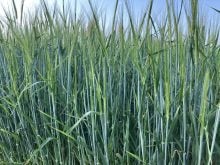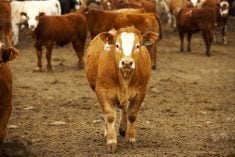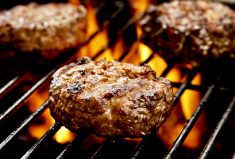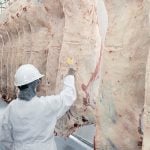Acres seeded to hybrid rye as a source of silage for feedlot cattle in Canada and the U.S. have increased in recent years. Increased use of hybrid rye as a forage source may be driven by greater yield potential relative to conventional rye and the early harvest may allow for double cropping.
In some areas, use of hybrid rye as a silage source may help balance risk for silage production as hybrid rye grows and is harvested earlier in the growing season than spring-seeded crops. In Western Canada, it is likely hybrid rye silage may offset part of the barley silage or perhaps the corn silage use.
But there were no controlled studies evaluating how barley silage and rye silage compare. Our recent research evaluated how the production and use of hybrid rye as a silage source compared to spring-seeded barley in diets for growing and finishing cattle.
Read Also
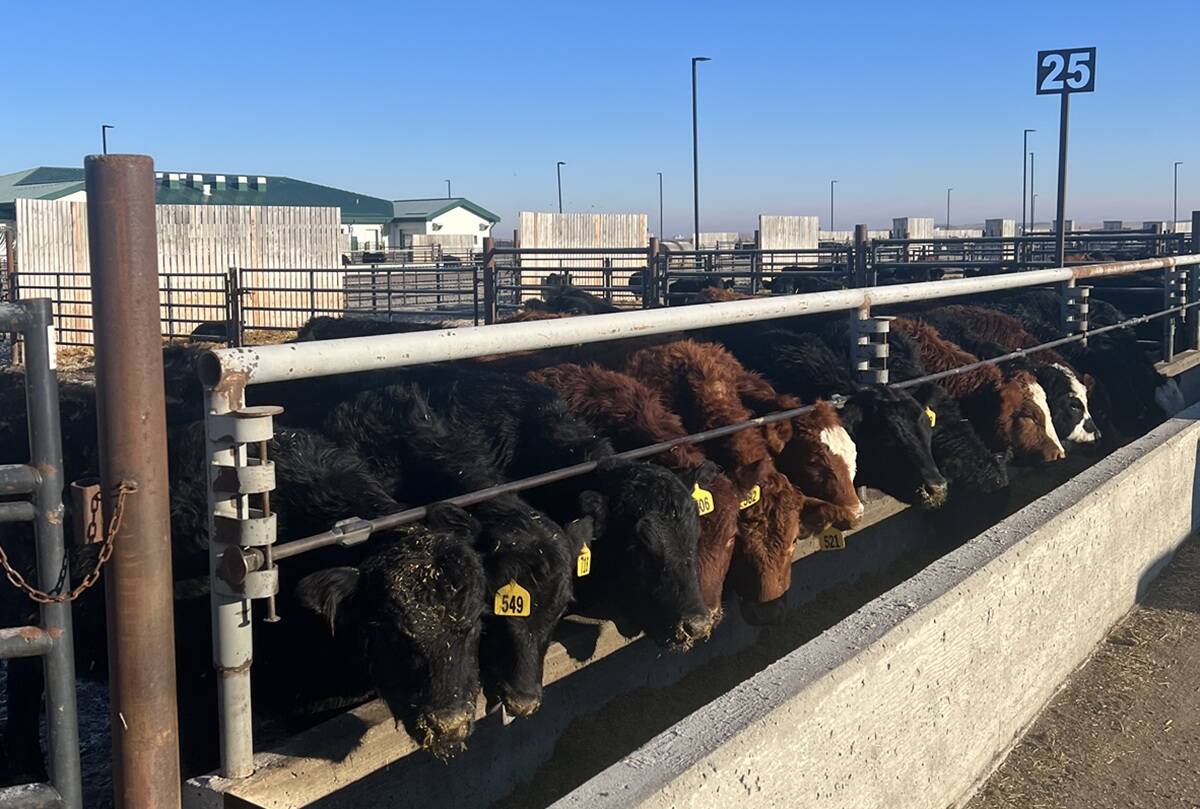
Managing newly received calves in the feedlot
What should cattle feeders focus on after calves arrive at the feedlot?
Yield and quality of hybrid rye and barley silage
Barley (CDC Austenson) and hybrid rye (KWS Progas) were seeded using three field plots/crop in each of two years. Plots were approximately 20 acres each. The hybrid rye was seeded in mid-August to early September, and the barley was seeded mid-May at the Livestock Forage Centre of Excellence at the University of Saskatchewan. The hybrid rye was harvested at the late-milk stage, and barley silage was harvested at the soft dough stage. Each load of freshly chopped forage was weighed to allow for the comparison of forage yields. Samples of the silage were also collected to compare silage quality.
In our study, there were no differences in yield between barley and hybrid rye, with 1.5 tonne/ac. for barley and 1.6 tonne/ac. for rye. It is important to remember that we harvested rye at an earlier stage of maturity than the barley, in line with general practices of feedlot operators. From a quality standpoint, the hybrid rye silage had lower crude protein, more fibre, and less starch than barley silage. The changes in chemical composition should be considered when including hybrid rye silage into diets for growing and finishing cattle.
Our studies indicate that hybrid rye and barley may provide similar quantities of forage when harvested at the recommended stages of maturity, but the rye will have less protein and starch, and more fibre. That said, the hybrid rye was harvested approximately 20 days earlier than barley.
Feeding rye to growing cattle
The silage from each production year was then fed to growing cattle to evaluate whether hybrid rye silage affected feed intake, growth and feed efficiency in an 84-day feeding study. For this study, we included hybrid rye silage as a replacement for barley silage. On a dry matter basis, the diet contained 60 per cent silage, and hybrid rye silage accounted for 0, 33, 67 or 100 per cent of the total forage, with barley silage making up the rest. Steers (eight pens/treatment with 12 steers/pen) weighed 343 kg (about 750 lb.) at the start of the study. As hybrid rye inclusion increased, steers ate less dry matter, grew more slowly, and had a lower gain-to-feed ratio. This resulted in a reduction in final bodyweight, with steers fed only barley silage weighing 462 kg (1,018 lb.) and those fed only hybrid rye silage weighing 432 kg (953 lb.). It is important to recognize that as hybrid rye silage inclusion increased, dietary starch decreased and fibre increased.
Feeding rye to finishing cattle
The same cattle were re-randomized to evaluate whether hybrid rye silage affected the performance of cattle during the finishing phase. We tested three diets where the control contained (dry matter basis) 10 per cent barley silage, or diets where hybrid rye silage replaced 50 per cent or 100 per cent of the barley silage. Cattle were fed until reaching a live weight of 650 kg (112 days on feed). We found that dry matter intake tended to decrease as hybrid rye silage increased. Average daily gain initially decreased and then increased as hybrid rye silage inclusion increased, while gain-to-feed was not affected. Hot carcass weight was nine kg lighter for steers fed diets that contained hybrid rye silage. However, the incidence of minor and severe liver abscesses decreased as hybrid rye silage increased. Again, we used a simple ingredient substitution strategy, resulting in subtle increases in fibre and reduced starch, when we replaced barley silage with hybrid rye silage.
Practical implications
Hybrid rye was harvested more than 20 days before barley silage and had similar yield, offering flexibility and managing risk for silage production. Using hybrid rye silage in growing and finishing diets may reduce feed intake and growth, at least when used as a direct substitute for barley silage.
Funding for this research was provided by the Saskatchewan Cattle Association through the Industry Development Fund, the Saskatchewan Ministry of Agriculture through the Agriculture Development Fund and the Canadian Agriculture Partnership, KWS Seeds Canada, Ltd. (Calgary, Alta., Canada), and FP Genetics (Regina, Sask., Canada).
– Fuquan Zhang is a PhD student and Dr. Greg Penner is a full professor in the animal and poultry science department at the University of Saskatchewan. Dr. Gabriel Ribeiro is an assistant professor and the Saskatchewan Beef Industry Chair in the animal and poultry science department at the University of Saskatchewan. He has a DVM, and M.Sc. and PhD in animal science (ruminant nutrition).



